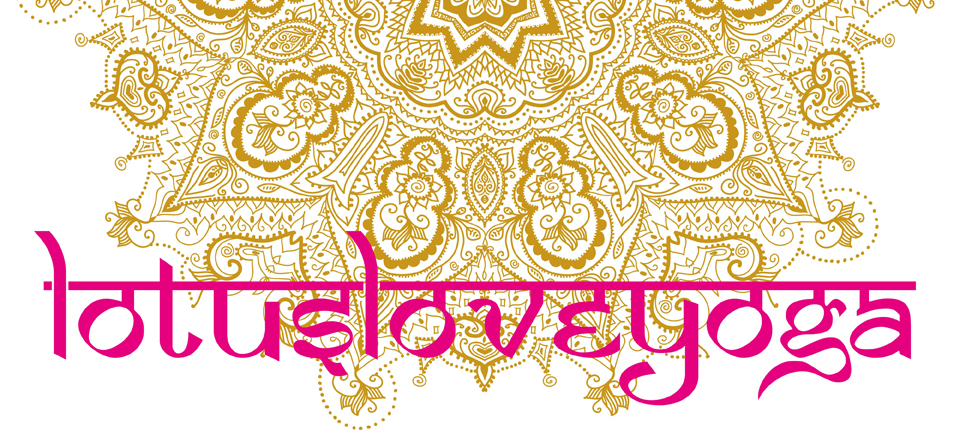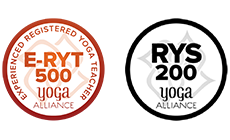How does the practice of yoga serve to heal the human body, mind and spirit?
The great sages, spiritual leaders and ancient yogis have explored and revered the deeply healing and transformative effects of yoga through the ages. Yoga has survived and revived to serve humankind from east to west, as a physically and spiritually developmental practice. Patanajli explains, ‘By dedicated practice of the various aspects of yoga, impurities are destroyed: the crown of wisdom radiates in glory’ (sutra 2.28), on which B.K.S Iyengar reflects that ‘yoga can cure or lessen physical, mental, moral or spiritual suffering’. This essay will consider how sadhana creates this process of healing and purification in the body, spirit and mind.
Krishnamacharya dedicated his life to yoga, Vedanta, Sanskrit, philosophy and Ayurveda. He studied in the Himalayas with Ramamohan Brahmachari, who instructed him in the ancient ‘Yoga Sutras’ of Patanjali and taught him to heal the sick by means of yoga. Ramamohan assigned Krishnamacharya the formidable task of spreading the message of yoga as a healing practice, benefiting physical, mental and spiritual health. These teachings spread throughout India and Europe. Today, Krishnamacharya’s Yoga Mandiram treats sick people, sharing ancient yogic texts and practices to Indian and foreign students.
Yoga is now practised globally by an estimated 250 million people, crossing religious and cultural boundaries, experiencing the physical, psychological and spiritual benefits of yoga.
In a stressful, fast paced modern world, hypertension is a common health issue, however a case-study showed that five out of 20 people suffering from hypertension were able to completely stop their use of medication, as a result of practising of pranayama and relaxation techniques; five could significantly reduce their medication; and four had lower blood pressure that when they began practising yoga. A group of 22 men aged 52-65 suffering for respiratory conditions such as, chronic bronchitis took part in a case study. Half the men were given physiotherapy and exercise to increase stamina and half were assigned a yoga teacher, who taught them asana and pranayama. It was concluded that ‘with the help of yogic breathing exercises, they could control an attack of severe shortness of breath without having to seek medical help’, whereas those who experienced physiotherapy did not report similar improvement. It has been reported that yoga is ‘the perfect anti-arthritis formula’, due to the slow movements and gentle pressures, which ease and loosen troubled, arthritic joints.
Yoga has been proven to lower cortisol levels in the body, a stress hormone, which has catastrophic effects on the body when produced in excess. Cortisol has been correlated to severe depression, hypertension and osteoporosis, due to calcium and other vital minerals being extracted from bones. In addition, the stress hormone has been proven to increase appetite in order to reduce the effects cortisol. The body absorbs those extra calories and distributes them as fat in the abdomen, contributing to weight gain and risk of diabetes.
How does the process of yogic healing take place within the human body?
Patanjali refers to the five Koshas, or sheaths that form the layers of the human being: the outer to the inner, combining the physical and subtle bodies, the breath, the mind, wisdom and bliss (sutra 1.2). The first is annamaya kosha, which refers to the physical or ‘food’ body and related to the element of Earth. This is the most tangible kosha and is responsive to change, directly influenced through the practice of yoga, diet and lifestyle. It is the sheath that encases and supports the deeper levels of existence therefore, asana and Ayurvedic lifestyle is focused on strengthening, purifying and healing annamaya kosha. B.K.S Iyengar comments on the ‘Yoga Sutras’ of Patanjali, explaining that asana cultivates physiological health, causing the organs and cells of the body to ‘function rhythmically…which effects changes in the senses, mind and intellect at a mental level’ (sutra 2.33), therefore the ‘food body’ is the first step to creating mental and spiritual well-being.
The second kosha is pranamaya kosha, which relates to the subtle body and element of water. This kosha incorporates the breath and prana, our innate vitality channeling through our being. Pranamaya kosha is enlivened and reinforced by the practice of pranayama: the practice of consciously elongating the inhalation, retention and exhalation of the breath. Whilst the breath is a physiological, automatic response, it is through the breath that we directly effect our psychological and mental state. Our heart beat, our emotions, our perception are in rhythmic synchronicity with the breath; therefore, tangibly demonstrating how pranayama benefits those suffering with respiratory problems, mental illness and hypertension. Iyengar comments on Patanjali’s yoga sutras (2.51) that once pranayama has been mastered effortlessly, ‘the movement of mind and consciousness cease…a state of pause is experienced in both breath and mind…a new awakening…innermost being’. In his book, ‘Light on Pranayama’, B.K.S Iyengar explains that ‘inhalation is the act of receiving primeval energy in the breath…in exhalation all thoughts and emotions are emptied with breath…one surrenders the individual energy to the primeval energy, atman’. Prasna Upanishad writes, ‘Prana is the soul of the universe…He rises as the sun of a thousand rays, and abides in infinite places’. Pranamaya kosha permeates the physical, mental and spiritual body.
Manomaya kosha is the sheath of manas (mind), sensory and emotional experience, relating to the element of fire. The endocrine system, pineal gland and hypothalamus gland, located in the brain, regulates our physiological sensory system and emotional behaviour therefore; yogic practices such as, asana simultaneously influence both annamaya and manomaya koshas. Similarly, the practice of pranayama creates harmony in the breath, which serves to bring peace and stillness in the mind. Pratyahara, the withdrawal of the senses, creates space between the self and the sensory experience of raga (desire) and dvesha (aversion), allowing our busy minds to quieten, taking refuge in peace and stillness. Patanjali states that dharana and dhyana are the practices of meditation that create ‘citta vritti nirodah’, the cessation of movements in consciousness, therefore, creating a sense of stillness in manomaya kosha. The body is cleansed, the breath is even, the mind is balanced. In today’s fast paced modern world, many of us reside in manomaya kosha and seek the inner space to encounter Self and stillness.
Vijnanamaya kosha refers to the ‘causal body’ and the element of air. This is sheath where karmic samskaras are stored and where Ill-health can originate, although often manifesting in annamaya kosha. Dharana, dhyana and pratyahara are imperative for the spiritual development and healing at this layer of our being. Sound or nada yoga is a practice that can awaken the light of vijnanamaya kosha, balancing the energetic frequencies within the body so that they can once again resonate with universal, pranic, primeval energies and sense of divine Self.
At the centre of these sheaths of being lies anandamaya kosha, the blissful state. As each sheath is balanced, purified, strengthened and healed through various yogic disciplines, we may encounter our innermost sheath, ananda. The space where we connect with the our true nature, divine being, essential self, the seer, purusa, atman. Patanjali refers to this experience as samadhi, a state of transcendence and union with the divine. We may only experience anandamaya kosha momentarily through our days, years and lives, but it is our truth, our highest potential, our soul.
Maya means illusion or veil therefore, through the various disciplines of yoga, the sheaths of our being are strengthened, purified and healed to reveal the essence of our being; maya dissolves like a passing cloud reveals the sun in an open blue sky. However, the mayas, or sheaths of our being are not isolated. They interact, influence and support each other. Furthermore, the practices of yoga weave simultaneously within each layer so that physical, energetic and spiritual well-being is experienced. Each kosha, a vital element and support for the next.
Iyengar states that asana has evolved over two millennia in order to tone and ‘exercise every muscle, nerve and gland in the body’, creating a fit, healthy body; free from fatigue and disease. Yogic discipline strengthens and purifies the physical form so that it may be a temple for divinity and service; therefore unveiling anandamaya kosha.
In ‘Light on Yoga’, B.K.S Iyengar gives a detailed explanation of 202 asana, exploring the techniques, variations, contra-indications and healing benefits of each posture. His precision and detailed anatomical explanations focus on annamaya kosha, however each analysis is embedded in ancient yogic tradition, the philosophy of Patanjali and the penultimate goal of yoga: samadhi, kavailya, ananda. Iyengar explains the importance of ‘Salamba Sarvangasana’ as the ‘Mother of all asana’. He uses the archetypal image of the nurturing mother to express that this asana creates ‘harmony and happiness’ in the body. Iyengar clarifies that the human system has several endocrine organs and ductless glands, which absorb nutrients from the blood and secrete hormones, allowing the body and brain to function. If the glands and organs fail to function, ‘the body starts to deteriorate’. Many asanas directly stimulate and tone the endocrine organs and glands, however Salamba Sarvangasana creates this effect on the thyroid and parathyroid gland located at the throat, as a result of jalandhara bandha, chin lock engagement. Blood supply is increased, circulating the neck and flowing freely to the brain without the pull of gravity. Iyengar claims this asana can relieve throat ailments, headaches and common colds, due to the body being inverted and the throat glands stimulated. The inversion of gravity affects the abdominal organs so that the bowels move freely, toxins are released and energy rejuvenated. There is a soothing effect on the nerves, relieving insomnia, irritation and hypertension. Iyengar claims that this pose creates vitality, strength, happiness, peace and confidence: the outer layer permeating and rejuvenating the inner being.
At the end of the text, Mr Iyengar offers his reader prescriptive yoga sequences that he considers remedial and healing for varying ailments, including: low blood pressure, back ache, bronchitis, arthritis and many more. Iyengar and his teachers before him follow this lineage: that yoga is a healing practice.
The subtle body, pranamaya kosha, consists of an intricate web of nadis, energy centres and chakras, through which pranic energies journey. Shushumna nadi rises along the spinal column, where the seven chakras are located at the major organs and glands of the body. Ida nadi weaves to the right of shushumna nadi, our masculine, yang, solar energy; and pingala weaves to the left, our feminine, yin, lunar energy; both nadis pass through the chakra centres and our major organs and glands. When we practice asana, stimulating, detoxifying, strengthening and purifying annamaya kosha, we are simultaneously balancing and purifying the chakra system of pranamaya kosha, which permeates manomaya and vijnanamaya koshas to reveal ananda, purusa, atman.
An example of this multi-faceted purification is the pranayama practice of nadi shodana, alternate nostril breathing. This breath awareness serves to harmonise flow of breath through both sides of the body; balancing the sympathetic and parasympathetic nervous system of annamaya kosha; creating a sense of calm and equilibrium in manomaya kosha. The sadhaka simultaneously balances the flow of prana channeling through ida and pingala nadis of the subtle body; therefore balancing the oppositions in the body, mind and spirit. When prana flows freely through the nadis and chakras, kundalini, spiritual consciousness, is free to rise through our being. Similarly, sirsasana creates waves of transformation throughout the layers of the Self: the physiological, psychological and spiritual body. B.K.S Iyengar explains that this pose causes a healthy flow of blood to the brain, creating clarity and alertness. The pineal and pituitary glands receive proper blood supply, creating health, growth and vitality. Annamaya kosha is nourished by practising sirsasana, however pranamaya kosha is deeply enlivened. Shahasrara chakra is stimulated and balanced so that the spiritual self, anandamaya kosha, may be experienced. Iyengar expresses, ‘the brain is the seat of intelligence…wisdom and power. It is the seat of Brahman, the soul’.
Chakra is translated as ‘wheel’, wheels of spinning energy. As our awareness, consciousness and connection rises through the chakras, the frequency of energy increases, becoming lighter and faster towards the essence of divine being. Shahasrara chakra is said to be our centre of divine connection, our highest energetic frequency. In order to experience our divine self, our lower, base chakras must be cleansed, nourished and balanced, in a state of well-being and harmony. Muladhara and annamaya kosha have the lowest energetic frequency, however if this earthy, solid base is not in balance, our energies remain tamasic and cannot ascend towards the upper chakras and the illuminating state of sattva. The layers of the human-being are deeply integrated and must be healed on all levels in order for the Self to encounter the shining light of the soul and find union with divine energy, ananda.
Essentially, the human-being is energy and each kosha, layer, chakra of our intricate Self is designed to resonate in harmony and balance within and without. Healing and transformation occurs when each layer of our being vibrates physically, mentally and spiritually in harmonious resonance.
Energy is vibration and vibration can be experienced as sound. Modern physics recognises that the universe is created of ‘small subatomic strands of energy’, which vibrate at varying frequencies, some inaudible. Nada yoga utilises the sound waves of the world to develop consciousness so that our being resonates at higher frequencies and vibrations, rising through the chakras towards divine energy. Meditation on nada, can range from the sound of nature: birds, breeze, whales; to the sounds of space: the hum of planets such as, Saturn, the pulsating vibration of the stars, the gases of the sun; the silence between sound; the repetition of mantra; the primordial nada of AUM. Nada meditation can also be focused on our inner nada, listening to our inner music and vibrations. Nada yoga uses vibration and resonance to raise awareness of the chakras, eliminate impurities, balance psychological problems and create union with universal, divine energy.
Akasha means space or sky, referring to the element of ether, beyond the element of air. This is also the elemental quality of Vishudha chakra. In Hinduism, Akasha is said to have the quality of shabda, sound, and therefore, is the imperceptible, eternal, pranic energy, primeval vibration, divine essence. Akasha is the space in which may encounter our inner nada, spiritual resonance.
Anahata means ‘un-struck’, as if deep vibration occurred without cause, referring to our inner nada, inner vibration. This sound is sacred and cannot be shared with another. When vishudha chakra is balanced and akasha is open, we are able to hear our inner nada, to resonate with anahata and connect to divine energy, consciousness. This union, oneness, total connection is the source of complete healing at the core of our being: atman.
The mantra AUM is considered to represent the primeval, divine energy of God. Patanjali states, ‘He is represented by the sacred syllable AUM, called pranava’ (sutra 1.27), on which B.K.S Iyengar comments that, ‘sound is vibration…the source of creation’. He explains that although God expands and permeates vibration, he is a subtle form, vibration is our most authentic connection. Nada yoga and recitation of mantra is therefore, a powerful invocation of divine energy and spirit. AUM represents aspects of the Self: A symbolising speech, U representing mind and M connoting the breath and prana. In reciting the mantra, the three aspects of the individual are brought into union. AUM is also said to represent the three guans: tamas, rajas and sattva; the three deities: Brahma, Vishnu and Shiva; the components of time: past, present and future; and aspects of the koshas: body, mind, intellect and ego. In meditating on ‘pranava’, these aspects of being are integrated. Iyengar explains that in repeating the sacred mantra AUM, ‘He finds presence of the Supreme Spirit within, and earns the peace which is free from fear, dissolution and death’ (sutra 1.27). Therefore, Patanjali verifies the deeply healing effects of nada yoga and mantra at the core of our being.
Ganesha is the elephant God, son of Shiva and one of most revered deities of the Hindu religion. He is the ‘destroyer of obstacles and evils’. Recitation of the mantra, ‘Om gam ganapataye namaha’, is said to manifest the essence of Ganesha into our subtle being, removing obstacles and ‘blocked energy in your physical and astral bodies’. This invocation of Ganesha raises consciousness and insight, so that the obstacles preventing perception of truth and knowledge are removed, therefore right action becomes manifest. This process of nada yoga and mantra has a deeply healing quality, transcending to the depths of our being and emerging into our daily lives.
Hayward describes, ‘as I looked out at the sun and the trees and the lake, there was a warmth, a living ness to it all. my feeling went out to it, quiet, soft, gentle feeling. And the sun and the lake and the trees met my feeling. Something there vibrated, resonated with me. There is an actual transfer…a feeling energy we could call it? And this transfer of feeling energy…is resonance…this principle of resonance runs throughout the universe’.
We are a complex, enigmatic being, incorporating physical, esoteric and spiritual layers. As we integrate our being towards our core, we become conscious of the expansive oceanic depths of our soul, purusa, atman. Yoga is a practice as deep and intricate as the Self. It is a process of discovery, enabling human healing to begin.
Yoga is becoming a worldwide phenomenon because people sense a lightness emerging in their being at some level, whether cellular, psychological or spiritual. The sheaths of the Self gradually unveil, synchronising and resonating more deeply with universal, divine energy. As the yoga wave sweeps humanity, we begin to resonate authentically and become consciously connected to each other. In this collective, divine consciousness, world healing begins: individual, social, cultural, historic healing. Every soul emphatically living and breathing a harmonious world, expressing Satya, ahimsa and Bhakti. A world of peace, divinity and truth.
Om Shanti.
By Heidi Pascual










